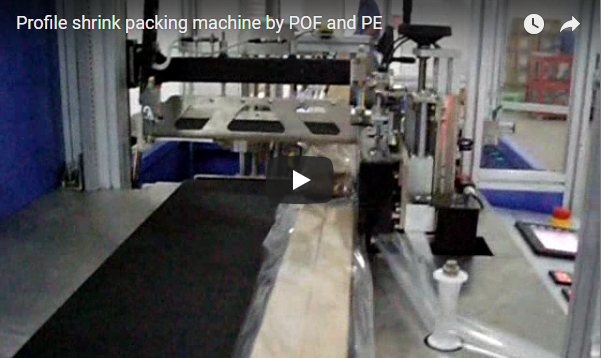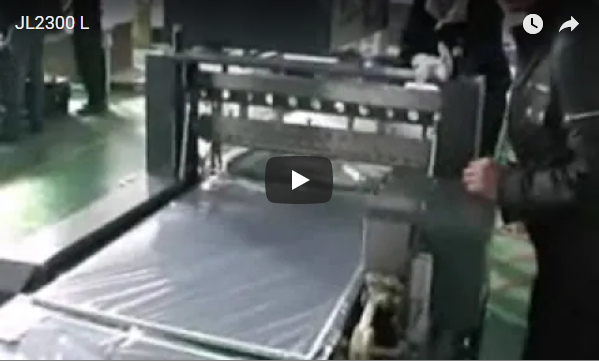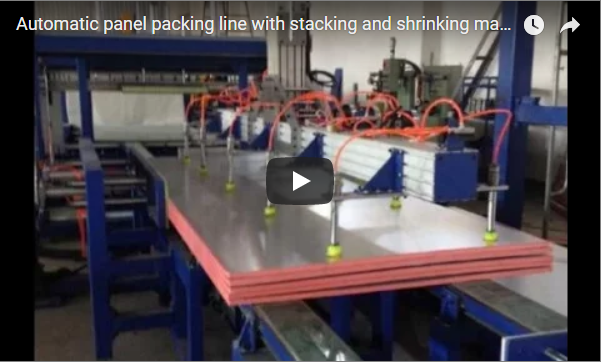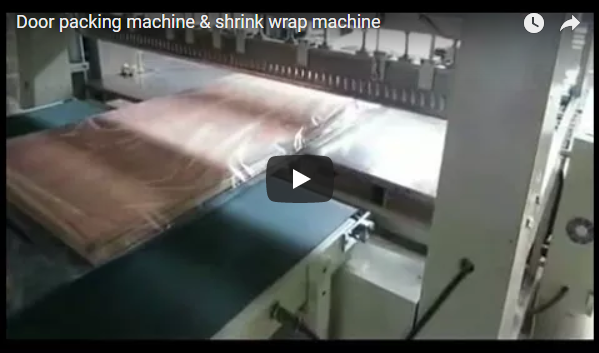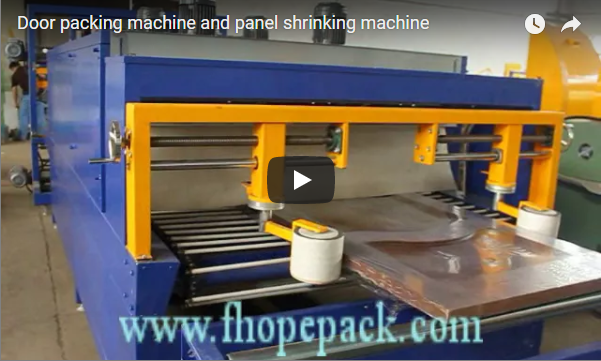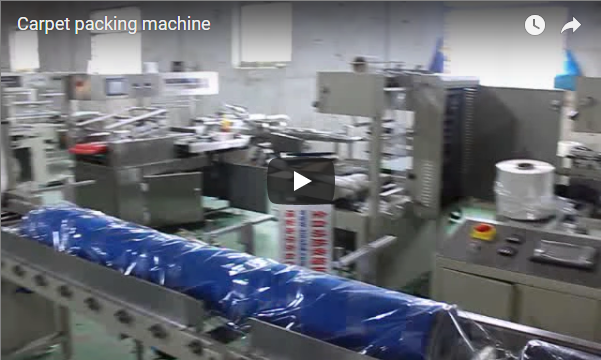Optimizing Roll Packaging: A Technical Guide to Shrink Wrapping Machines for Carpets and Curtains
Video demonstrating a typical shrink packaging process for rolled goods.
Protecting large, bulky items like carpet and curtain rolls during storage and transit presents unique challenges. These products are susceptible to dirt, moisture, scuffing, and unraveling. An effective solution employed across industries is shrink wrapping, utilizing specialized machinery designed to handle the dimensions and weight of rolled goods. This guide delves into the technical aspects, operational considerations, and benefits of using shrink packaging machines for carpet and curtain rolls, adopting an instructional approach.
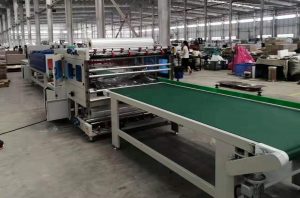
1. Core Technology: How Shrink Wrapping Works for Rolls
The fundamental principle involves enveloping the roll in a thermoplastic film and then applying heat. The heat causes the film to shrink uniformly around the product, creating a tight, protective layer. Key stages in an automated or semi-automated process typically include:
- Infeed: Rolls are placed onto a conveyor, manually or automatically, ensuring proper alignment for entry into the wrapping zone.
- Film Dispensing & Sealing: A roll of shrink film is precisely dispensed. Depending on the machine type (discussed below), the film is either draped over the product (L-bar sealer) or fed around it (side sealer or sleeve wrapper). A sealing mechanism (e.g., hot wire, hot knife) then cuts the film and fuses the edges together, creating a bag or sleeve around the roll.
- Heat Tunnel Application: The loosely wrapped roll travels through a heated tunnel. Controlled hot air circulation causes the film to shrink tightly and conform to the shape of the roll. Tunnel temperature, airflow, and conveyor speed are critical, adjustable parameters.
- Cooling & Outfeed: After exiting the tunnel, the package may pass through a cooling zone to help the film set quickly, ensuring a durable finish before the wrapped roll is conveyed to the discharge area for handling or palletizing.
2. Key Machine Types for Roll Packaging
While various shrink systems exist, certain configurations are better suited for large cylindrical products:
- L-Bar Sealers: These create a fully enclosed bag by sealing on three sides (one folded edge, two sealed edges). Best suited for moderate-volume applications or when complete enclosure is paramount. Requires the operator or automation to place the product within the folded film before the L-shaped sealing bar descends.
- Side Seal Machines: Offer higher throughput. The product moves continuously on a conveyor. Film is folded over the product, one side is sealed longitudinally (side seal), and subsequent cross seals occur between products. This is often preferred for longer products or higher speed requirements.
- Sleeve Wrappers (Bundle Wrappers): These apply a band or "sleeve" of film around the product, leaving the ends open (often called "bullseye" openings). While offering less complete protection from dust ingress at the ends, they use less film and can be very robust for heavy rolls, primarily focused on unitization and preventing unraveling. Heat shrinking secures the sleeve tightly.
3. Technical Specifications & Selection Parameters
Choosing the right shrink packaging machine requires careful consideration of several technical factors:
- Product Dimensions & Weight Capacity:
- Maximum Roll Diameter: Specify the largest diameter the machine must accommodate.
- Maximum Roll Length: Ensure the sealing area and tunnel width are sufficient.
- Maximum Roll Weight: Conveyors, drives, and machine structure must handle the load.
- Throughput Requirements:
- Packs Per Minute (PPM) or Per Hour (PPH): Define the required packaging speed to match production output. Side sealers generally offer higher speeds than L-bar sealers.
- Shrink Film Compatibility:
- Film Type: Polyethylene (PE) is common for heavier items like carpets due to its strength and puncture resistance. Polyolefin (POF) is often used for lighter goods or where clarity is key, but may be less suitable for heavy, abrasive rolls.
- Film Gauge (Thickness): Measured in microns or gauge. Thicker films (e.g., 60-100 micron PE) provide more robust protection for heavy rolls.
- Film Roll Width & Diameter: Machine must accommodate the required film stock dimensions.
- Sealing System:
- Hot Knife or Hot Wire: Hot knife systems often provide stronger seals, beneficial for thicker PE films. Seal wire systems can be faster but may require more frequent replacement.
- Seal Bar Dimensions: Must be larger than the product cross-section.
- Heat Tunnel Performance:
- Temperature Range: Must achieve the necessary heat for the chosen film type (PE requires higher temps than POF).
- Airflow Control: Adjustable airflow patterns are crucial for uniform shrinking on cylindrical shapes.
- Conveyor Type & Speed Control: Roller or belt conveyors suitable for heavy rolls; variable speed is essential for optimizing shrink quality.
- Power & Air Requirements:
- Voltage/Phase/Amperage: Ensure compatibility with facility power.
- Compressed Air Consumption (PSI/CFM): Many machines use pneumatics for sealing bars or actuators.
4. Operational Insights & Experience Sharing
Effective operation goes beyond basic machine functions:
- Film Loading & Threading: Ensure correct film path and tension. Improper tension leads to poor seals or film tracking issues.
- Sealing Parameters: Adjust temperature and dwell time based on film type and thickness. Too hot/long causes burn-through; too cool/short results in weak seals. Regular cleaning of the sealing element is vital.
- Heat Tunnel Optimization: This is often trial-and-error initially.
- Start with recommended settings for the film type.
- Adjust temperature gradually (increments of 5-10°F / 2-5°C).
- Tune conveyor speed: slower speed allows more shrink time (careful of overheating); faster speed reduces shrink time.
- Adjust airflow dampers: focus air where needed, avoid concentrating heat that could melt or burn the film ("dog ears" or overly thin spots indicate uneven heating).
- Use pinwheel perforators on the film before shrinking to allow trapped air to escape, preventing ballooning and ensuring a tight wrap.
- Handling Heavy Rolls: Ensure ergonomic loading/unloading procedures or integrate appropriate lifting aids/automation to prevent operator strain and product damage.
- Routine Maintenance:
- Daily Checks: Clean sealing area, check film alignment.
- Weekly Checks: Inspect sealing wires/blades/pads for wear, check conveyor belts/rollers, lubricate moving parts per manufacturer guidance.
- Monthly Checks: Inspect tunnel heating elements and blowers, verify safety interlocks.

5. Benefits of Proper Shrink Packaging for Rolls
Beyond preventing physical damage, effective shrink wrapping offers:
- Enhanced Product Integrity: Prevents rolls from telescoping or unraveling during handling.
- Environmental Protection: Creates a barrier against moisture, dust, and dirt contamination.
- Improved Load Stability: Unitizes rolls, making them easier and safer to stack, store, and transport.
- Tamper Evidence: A broken or compromised shrink wrap indicates potential tampering.
- Potential for Branding: Pre-printed shrink film can incorporate logos, handling instructions, or product information.
6. Conclusion
A shrink packaging machine tailored for carpet and curtain rolls is a valuable asset for manufacturers and distributors. Understanding the underlying technology, key machine types, critical technical specifications, and operational best practices is essential for selecting the right equipment and achieving optimal packaging results. Proper operation and maintenance ensure consistent protection, enhance product presentation, and contribute to efficient handling throughout the supply chain.
For further exploration of shrink wrapping solutions:
https://www.fhopepack.com/Shrinking_machine.html
For inquiries: info@fhopepack.com

